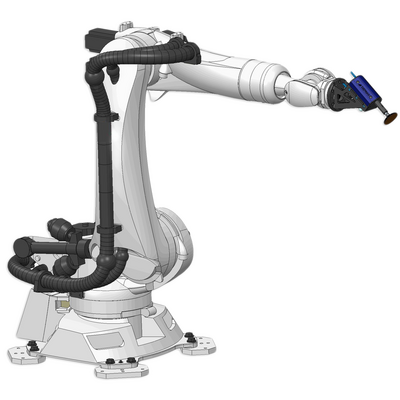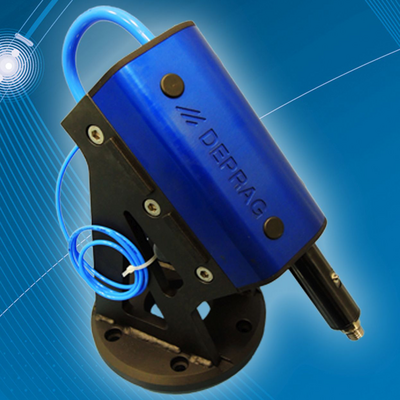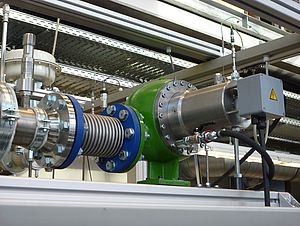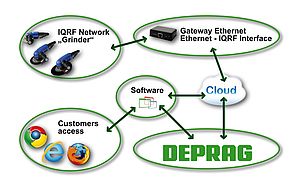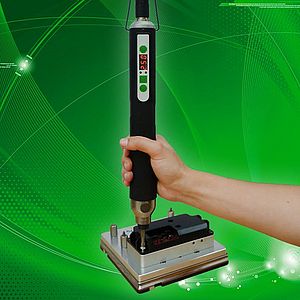DEPRAG is a traditional manufacturer of professional air tools, sold worldwide under the brand DEPRAG INDUSTRIAL. Their tools are used in operations in every significant field of industry, including the automobile industry, machine building and potentially explosive environments. DEPRAG offers a wide range of pneumatic grinders, polishers, files, drills, thread-cutting machines, impact wrenches, hammers, scalers, saws, pliers and ATEX-certified tools.
Nowadays individual solutions customized to specific customer requirements are ever more frequently in demand. DEPRAG was one of the manufacturers asked to come up with such a customized solution for one of their longstanding, respected clients from the automobile industry. The customer had previously been using handheld pistol grip polishers from the PLU range of DEPRAG INDUSTRIAL’s standard series on welding for vehicle bodywork. This task was executed by two employees per production line in three shift operation, therefore six workers were needed per line. The definition of the client’s project was: The traditional handheld air tool should be replaced by a stationary robot (End-of-Arm Tooling for grinding and polishing). The aims were: Two robots replacing six workers (two workers per shift), optimization of the surface finishing and at the same time eliminating human error, preventing any potential health hazards, increasing productivity with equal or reduced production costs.
First the project seemed to be simple; it is the norm today for robots to carry out activities such as welding, coating and transportation. Pavel Šilhán, Sales Manager for DEPRAG INDUSTRIAL Tools, emphasised: “The project definition was to replace grinding using handheld air tools with End-of-Arm Tooling whilst also taking into consideration the irregularities of the surface in relation to the contact force. This contact pressure is not consistent for every component”.
There are new technologies currently on the market which enable the contact force to react sensitively to varying surface profiles. They have their own electronic controller which is independent from the robot’s controller. One particular stipulation by the client was, however, to manage without this additional controller. Malfunctions or breakdowns of electronically controlled processes can cause extensive production expenses. Interruptions are especially unwelcome in series production as they can lead to considerable financial losses.
The task therefore proved to be a greater challenge than expected for the technical development team at DEPRAG. The developer selected a stationary spindle with the necessary technical parameters for the required quality standards based on the grinding material and framework data provided by the client. The spindle was set up in such a way to prevent any limitation on the robot’s freedom of movement. The adjustable spindle positioned in the clamping chuck is connected to a pneumatic cylinder which exerts a defined axial force on the grinding tool. Spindle overload can be adjusted in an external range of 1.0 to 6.3 bar. Using this method, the required contact pressure can be implemented sensitively without using a regulation circuit.
The technical 3D documentation of the grinding head was developed as a robot simulation. At the same time, in the DEPRAG laboratory the optimal contact pressure in relation to the grinding material was determined in order to implement the required quality criteria for the surface. Only then was a prototype of the stationary grinding head produced and successfully tested under real conditions in mass production at the customer’s facilities.
After inspection of the functioning capabilities of the new technology, the quality parameters and repetition factor; the “return on investment” of the whole robot was calculated. From an economic standpoint the investment is amortized within three months. Additional benefits include the environmentally friendly aspect, prevention of injury to humans and the elimination of any human errors during polishing.
End-of-Arm Tooling for Grinding and Polishing
Stationary robot to replace handheld air tools
- by DEPRAG Schulz GmbH & Co.
- November 23, 2016
- 1019 views


